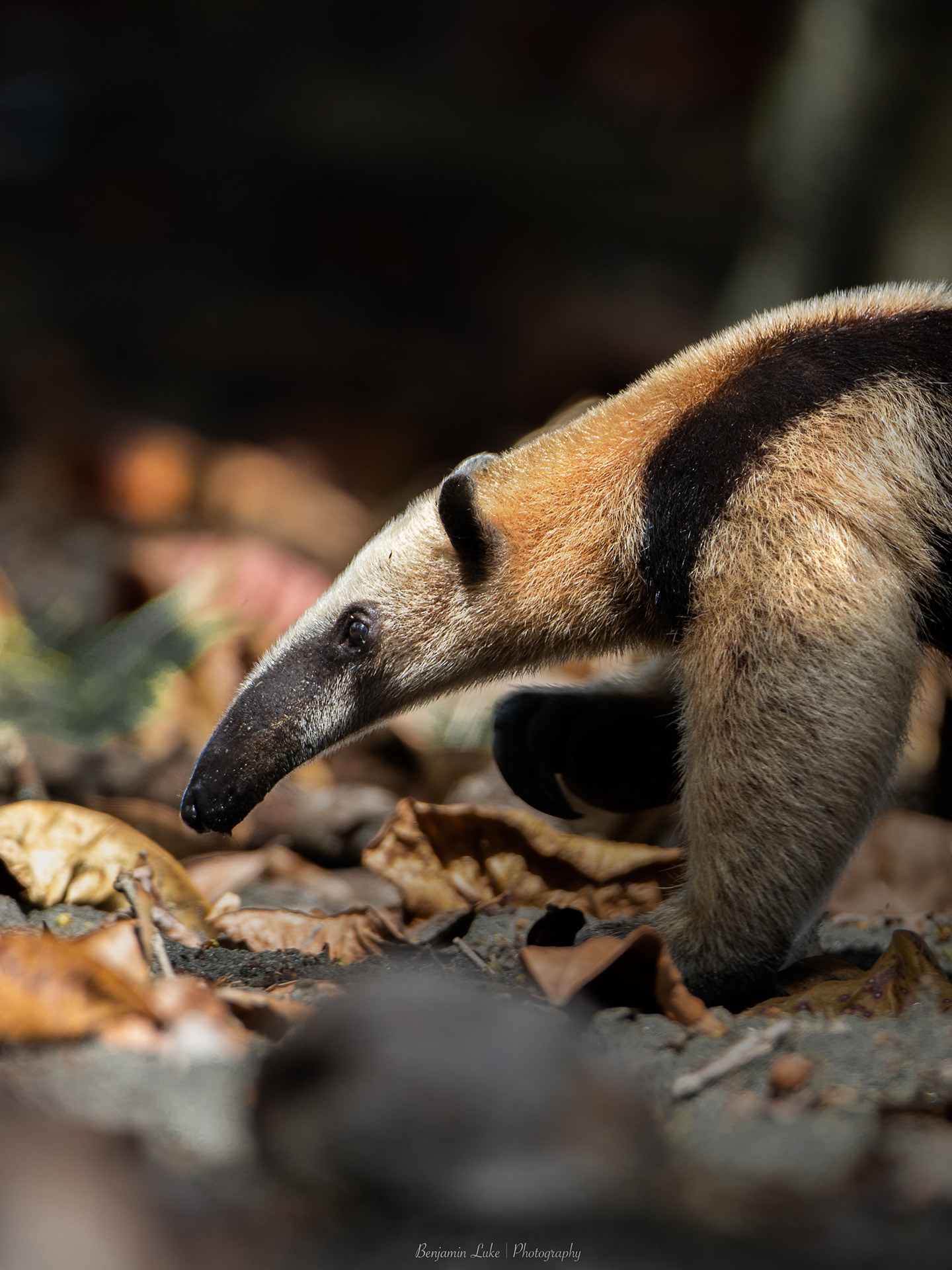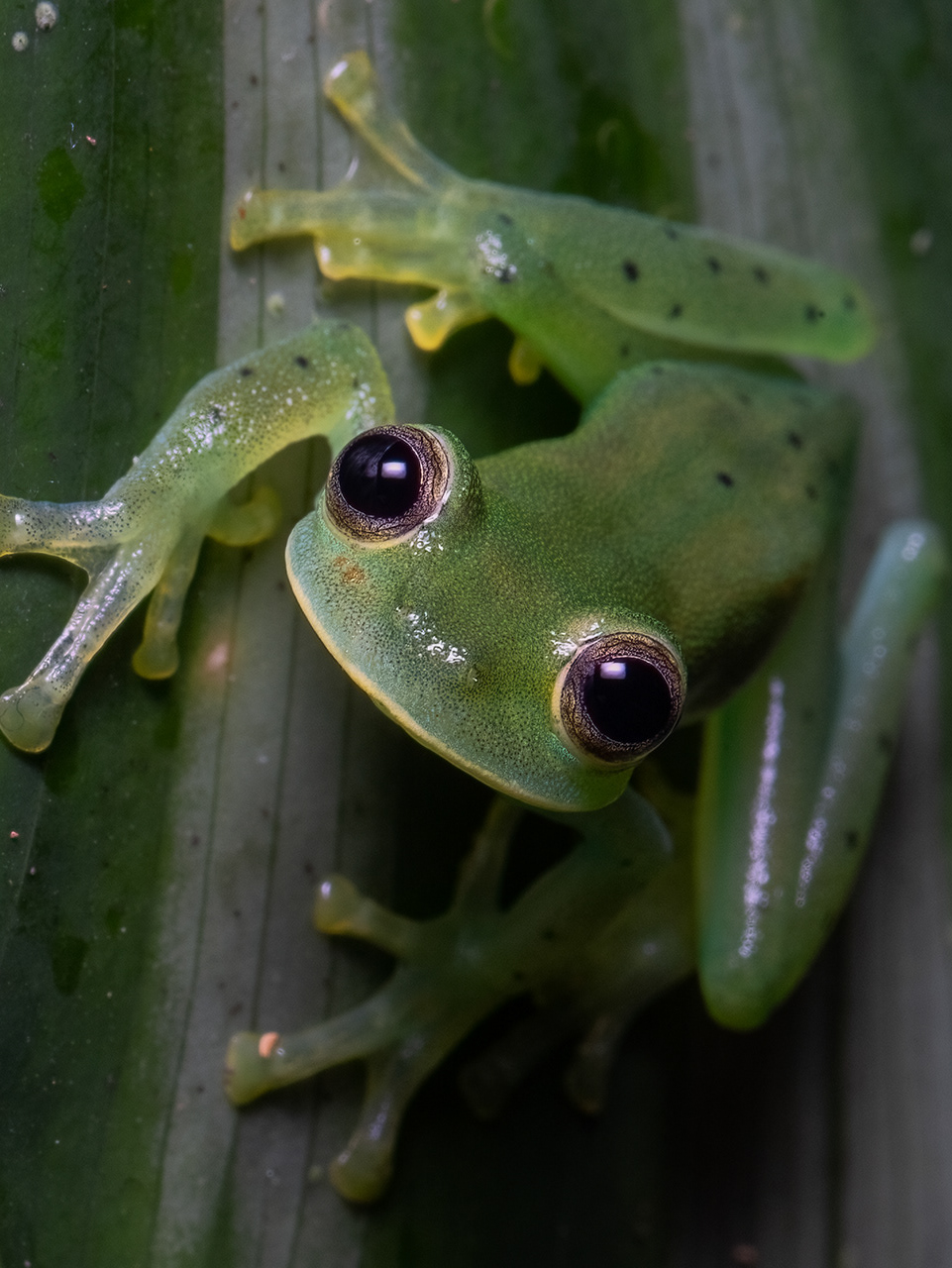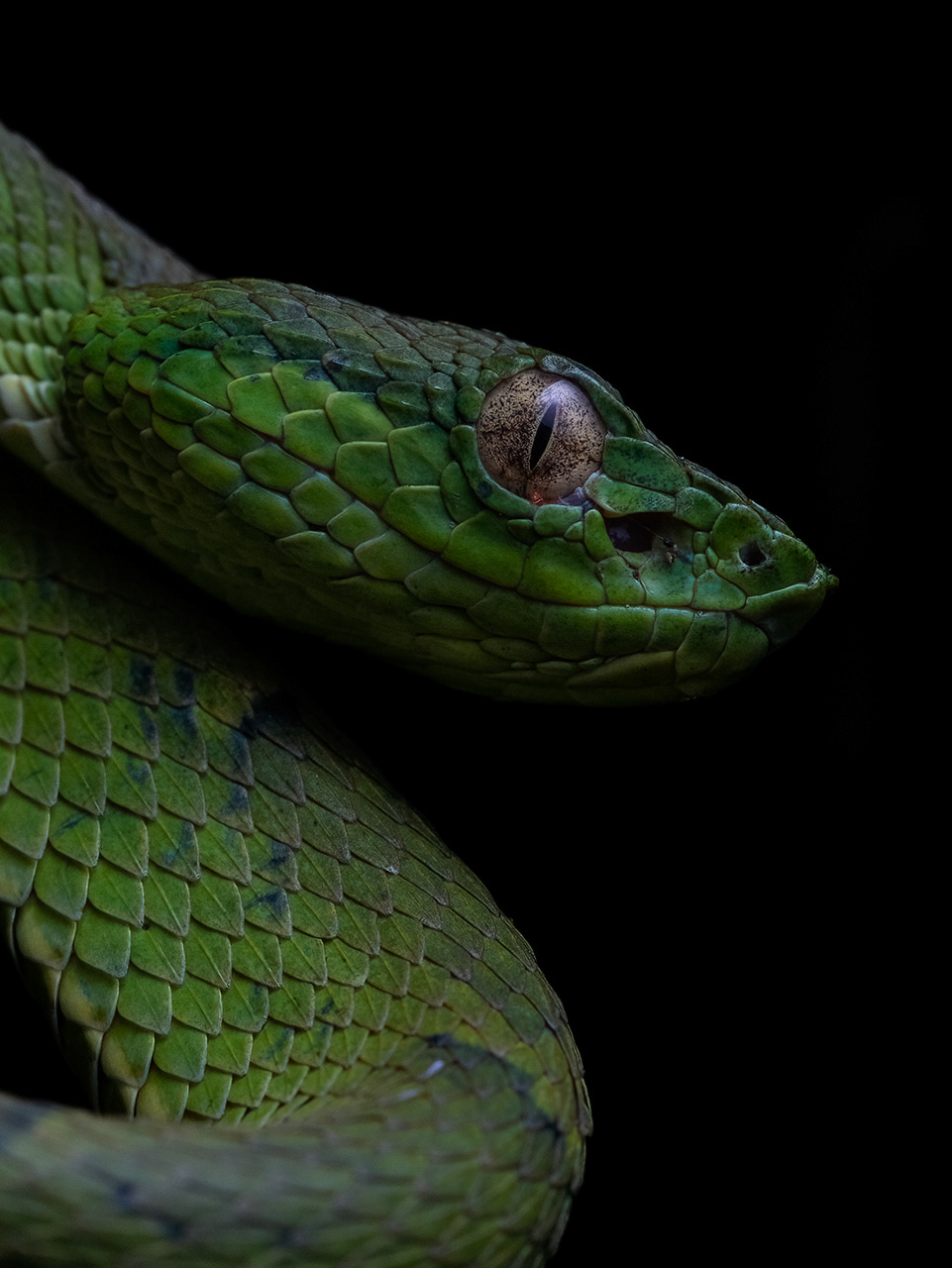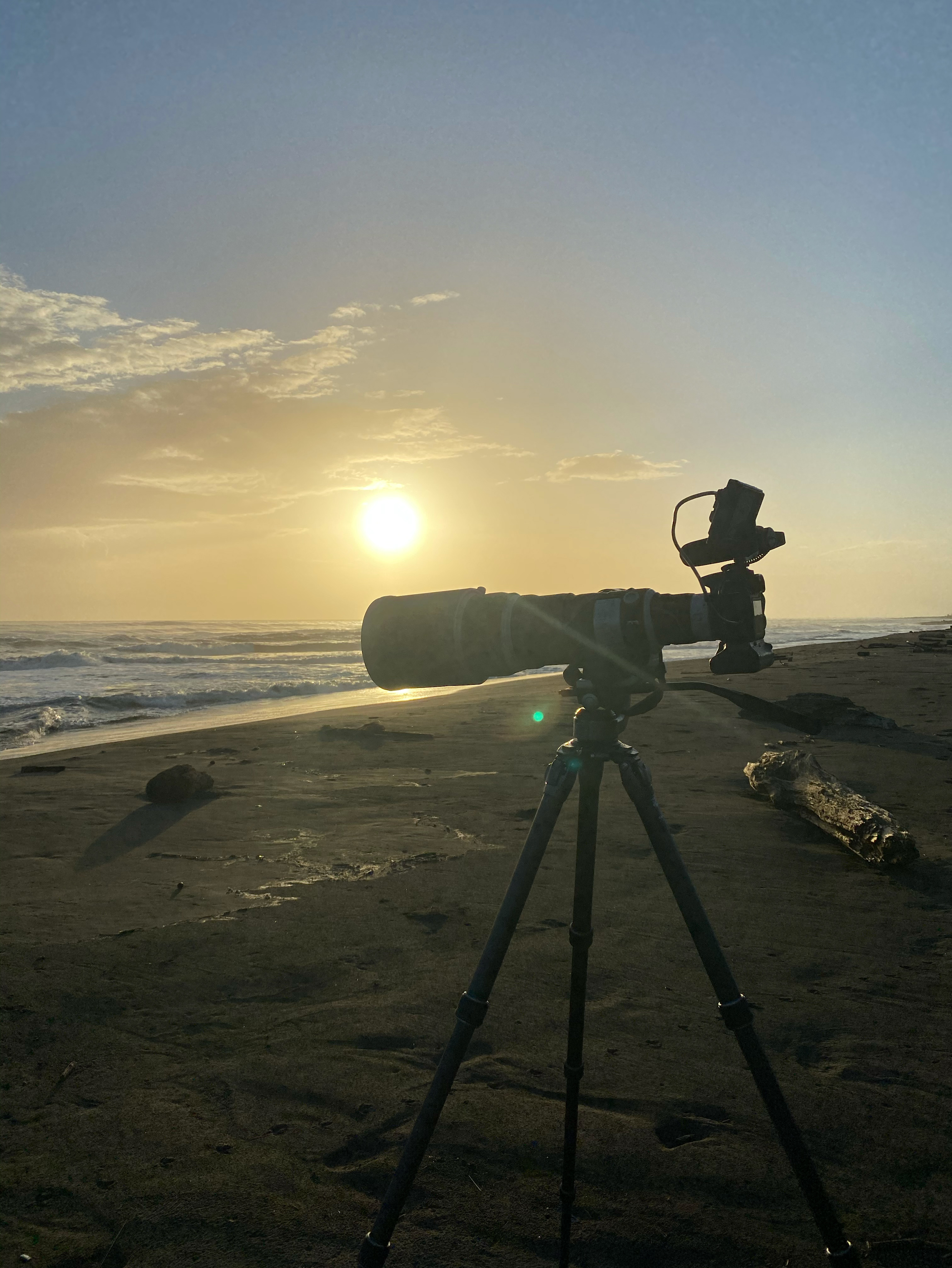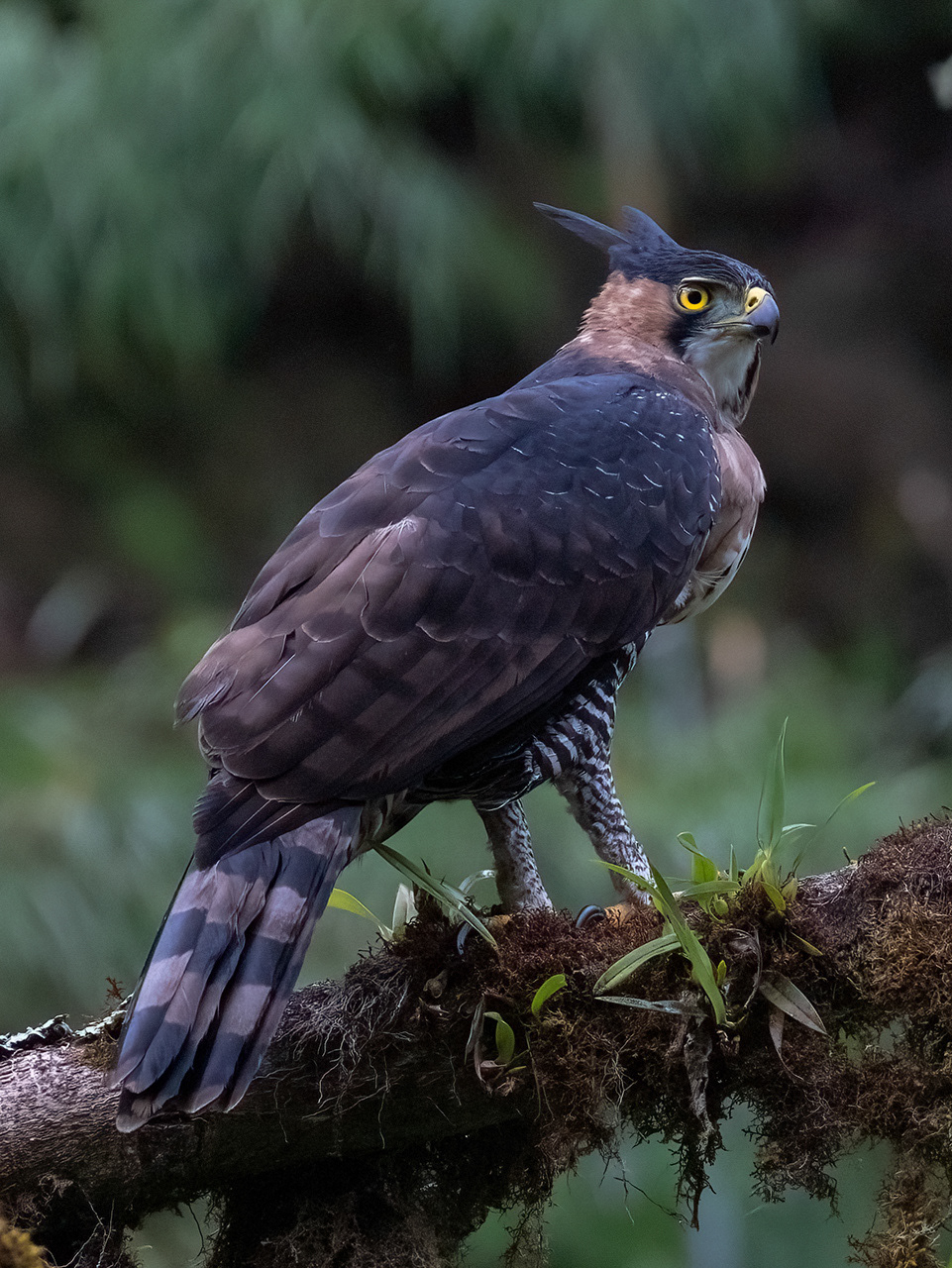The set up consists of 1 DSLR camera and a 24mm lens and protective housing, 2 off-camera flashes connected via wireless triggers and a PIR sensor to detect infrared radiation of mammals passing by.
When the sensor triggers the camera, the camera then triggers the flash's.
Creating images as seen below.
A melanistic oncilla passed my DSLR camera trap deep in primary forest. This is an incredibly rare capture and is in fact the first of its kind. I have not seen and cannot find any images of this species with the melanistic gene expressed, with a DSLR camera trap.
The following two images are of the same two puma's I photographed just under 2 months ago in the cloud forest. It seems like the juvenile (second image) has become completely independent. Notice the juvenile has a set of scratches on his leg and what looks like a puncture mark just below the eye.
This could be the result of the female expressing that the juvenile needed to move on, or another encounter with a different cat in the area.
Capturing a big cat with my own equipment and set up has been a dream since I was around 8 years old. In the south pacific mountains of Costa Rica I was finally able to fulfil my dream. These two puma's showed up on my camera after just 1 night deployed in the field.
you can see in the trail camera footage below that it is an adult female and her cub which likely to be only a few months old.
An ocelot pausing to look in the direction of my flash housing, these small cats will hunt small mammals like cotton tails (rabbits) amongst many other species.
T
he collared peccary is one of the puma's main prey species, captured just a few hours apart it is likely the puma's are looking for the heard.
Unlike their relative the white-lipped peccary the collared is not as aggressive towards humans and can be observed safely.
